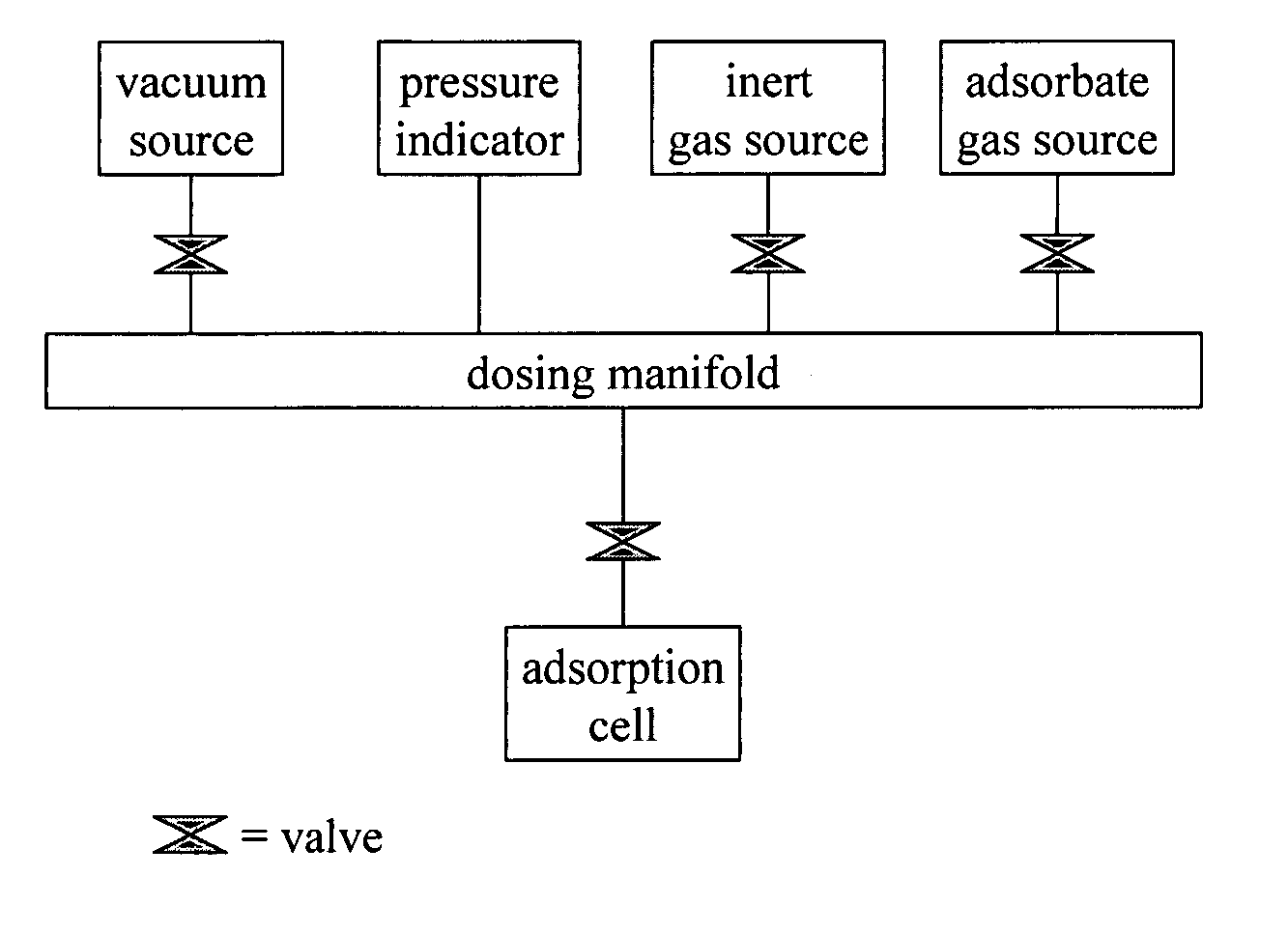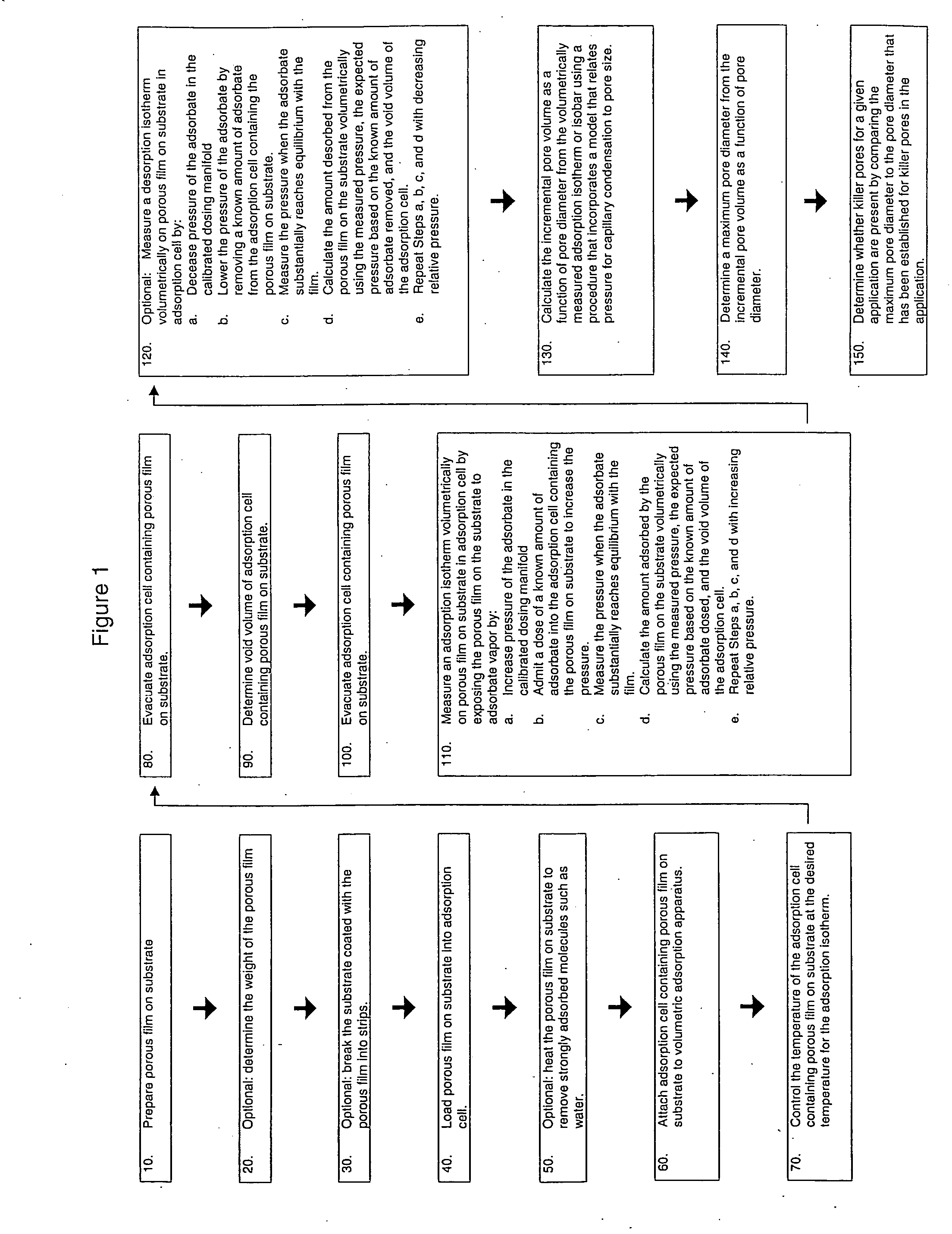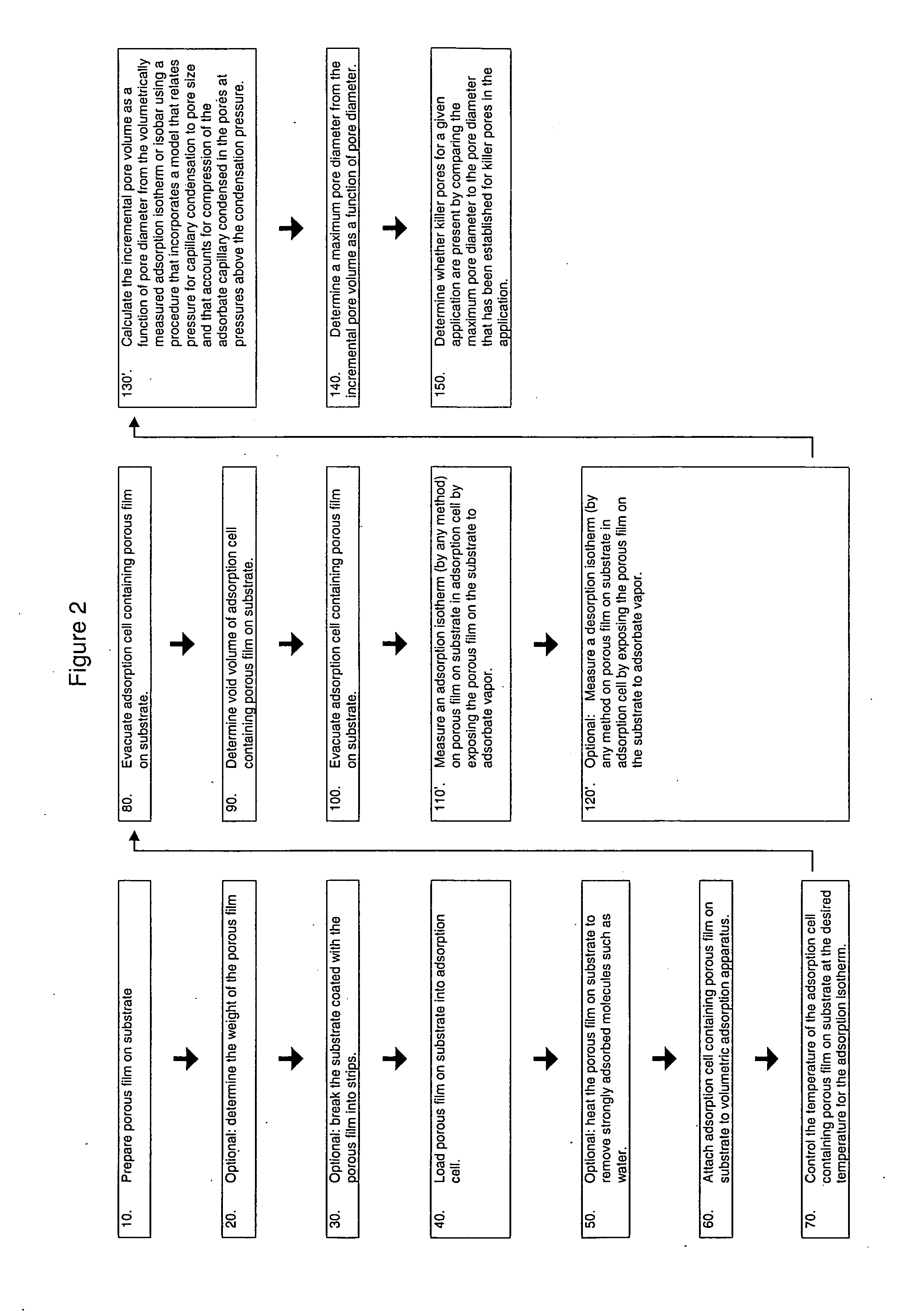Method for characterizing porous low dielectric constant films
a low dielectric constant, film technology, applied in the field of microelectronics, can solve the problems of increased probability of failure, production loss, and difficulty in using techniques
- Summary
- Abstract
- Description
- Claims
- Application Information
AI Technical Summary
Benefits of technology
Problems solved by technology
Method used
Image
Examples
example 1
Spin-On Low k Film Using Surfactant as Porogen and BJH / Kelvin as Procedure / Model for Capillary Condensation
[0113] The following example shows that it is possible to measure adsorption / desorption isotherms volumetrically on a film on a substrate. It also shows a new definition of pore diameter that can be used for determining whether killer pores are present. The film forming mixture was prepared in a high-density polyethylene bottle by adding 50 / 50 by weight methyltriethoxysilane / tetraethoxysilane solution, propylene glycol propyl ether, and surfactant. The mixture was shaken briefly. An aqueous solution of 96 wt % 0.1 M nitric acid and 4 wt % 2.4 wt % aqueous tetramethylammonium hydroxide, was added. The bottle was capped and shaken for 30 to 60 seconds. The solution was aged in the capped bottle at ambient temperature for at least 2 hours.
[0114] A film of the mixture was deposited by spin-coating a 1.2 milliliter (mL) sample on a 4-inch wafer with 0.005-0.020 ohm-cm resistivity ...
example 2
Spin-On Low k Film Using Surfactant as Porogen and GAI / DFT as Procedure / Model for Capillary Condensation
[0130] This example shows the unexpected benefit of DFT over BJH in giving a lower killer pore volume absence detection limit. The samples and isotherms were the same as those used in Example 1.
Calculate the Incremental Pore Volume as a Function of Pore Diameter from the Volumetrically Measured Adsorption Isotherm Using GAI as the Procedure and Incorporating DFT as the Model that Relates Pressure for Capillary Condensation to Pore Size
[0131] Micromeritics ASAP DFT Plus® for Windows, Version 3.00 software, commercially available, was used to calculate the pore size distributions using the N2 adsorption branch of the isotherms at 77 K. The options for the calculations include the choice of model (or kernel of isotherms (to be used in the GAI equation) obtained from the DFT calculations), the extent of regularization (or smoothing), and the data points in the isotherm used for the...
PUM
| Property | Measurement | Unit |
|---|---|---|
| dielectric constant | aaaaa | aaaaa |
| dielectric constant | aaaaa | aaaaa |
| dielectric constant | aaaaa | aaaaa |
Abstract
Description
Claims
Application Information
 Login to View More
Login to View More - R&D
- Intellectual Property
- Life Sciences
- Materials
- Tech Scout
- Unparalleled Data Quality
- Higher Quality Content
- 60% Fewer Hallucinations
Browse by: Latest US Patents, China's latest patents, Technical Efficacy Thesaurus, Application Domain, Technology Topic, Popular Technical Reports.
© 2025 PatSnap. All rights reserved.Legal|Privacy policy|Modern Slavery Act Transparency Statement|Sitemap|About US| Contact US: help@patsnap.com



